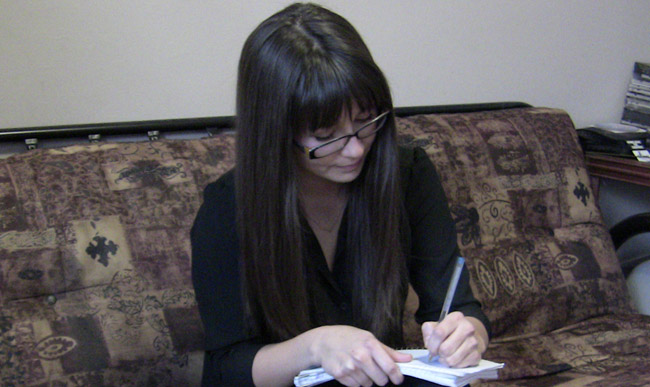Tikinaagan her research tool
By Greg Macdougall
OTTAWA – Alexandra Nahwegahbow began her PhD studies at Carleton University in September, only three days after defending her Masters’ thesis.

Her academic focus has been on the place of children in pre-colonial Indigenous communities, as seen through the lens of the tikinaagan or traditional cradleboard.
Nahwegahbow’s grandmother had recently passed on at the time she began her graduate studies.
“It really affected me, and I think that’s what drew me towards this sort of work, looking at the roles of kids and how important it is to listen to children, the way that she always did, and to look at the different traditional values that surrounded parenting, community and family.”
She hopes that her work helps people understand how important these traditional Anishinabek values are, how children were held sacred at the centre of the community. It also examines the impact of settler-colonialism, in particular the devastating effects of residential schools and also the broader clash between European and Indigenous perspectives towards the role of children and parenting.
Her research focused on one particular historical tikinaagan, which she contextualized with in-depth place-based interviewing as well as examining research and analyses from other scholars and existing literature. Nahwegahbow is a citizen of Whitefish River First Nation, but the community where her study is based is in the territory of n’Daki Menan in northeastern Ontario on Bear Island, the homeland of the Teme-Augama Anishnabai (Temagami First Nation).
She felt drawn to a tikinaagan from Temagami she found at the Canadian Museum of Civilization in Gatineau during the first year of her Masters studies. It was collected in 1913 by anthropologist Frank Speck, and she really wanted to learn more about it and its context.
After initial exploratory research, she approached members of the community, but not without trepidation – she wanted to ensure she wasn’t repeating the problematic ways many academic researchers interact with Indigenous communities to which they have no personal connection, and that her work would actually be of benefit to the community and more broadly.
The research process, and the finished product she has presented to the people involved, was well received.
“I draw from a range of resources in my studies. A lot of the research I incorporated came from interviews, books, reports etc. but also from conversations or memories with family, close friends, and other speaking engagements and symposia I attended.”
Part of what she looked at were the artwork patterns on tikinaagans, noting how traditionally there were often depictions of manitous / spirits that fostered notions of balance and centrality. Much like historical Anishinabek pouches and bags that held medicines, tikinaagan wrappings were also often ornamented with upper-world or sky spirit motifs, and underwater or lower-world ones, with the child located in the middle. There was a shift over time to more floral motifs, which is generally seen as having been brought about by European influence, but she notes that the theme of balance was kept even in these.
“I felt that it was appropriate that these images that promote balance and the importance of centrality, that they would be put on these baby carriers because they’re meant for children and young people who actually are at the very centre of our communities.”
She also feels the tikinaagan symbolizes the importance of children feeling safe and being wrapped in a sense of belonging in the community.
With her PhD, Nahwegahbow, 27, aims to continue working with material culture, historical objects that were made for children and childcare, to examine their contextual power and the stories they have to teach us today.


